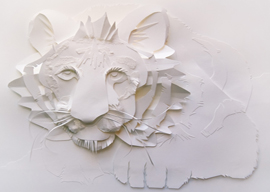
August 21, 2012

U.S. newspapers this fall will devote countless column inches and network TV will set aside endless hours to revisiting the most perilous month in the history of the republic, if not of the world.
Nikita Khrushchev’s decision to secretly install nuclear-armed intermediate-range ballistic missiles in Cuba began to form in his mind sometime earlier, perhaps in April of 1961.
Then it was that the new young U.S. President John F. Kennedy put a brigade of Cubans ashore to become the vanguard of a guerrilla army to overthrow Fidel Castro’s regime.
The Bay of Pigs became a metaphor for feckless folly and failure.
Khrushchev had ordered an army of tanks into Budapest to crush the Hungarian Revolution in 1956 and watched, astonished, as a U.S. president recoiled at using his power to expunge a Soviet base camp 90 miles from America’s shores.
In June, Kennedy met Khrushchev in Vienna and was orally mauled. In August, Khrushchev tested Kennedy again, building a wall to sever East Berlin and seal off the Soviet sector. Berliners seeking to escape were shot.
Kennedy ordered a one-year call-up of the reserves.
Moscow then broke a moratorium on atmospheric testing of nuclear weapons, exploding a 57-megaton monster bomb in the Arctic.
By mid-October 1962, Soviet missiles were in Cuba. Their 1,500-mile target radius put Washington, D.C., in range.
The Air Force chief of staff was Gen. Curtis LeMay, former head of Strategic Air Command, who boasted of his B-29 fleet in the Pacific war, “We torched and boiled and baked to death more people in Tokyo that night of March 9-10 than went up in vapor in Hiroshima and Nagasaki combined.”
LeMay wanted to bomb and invade Cuba, even after Khrushchev pulled his rockets out. When Mao Zedong denounced Khrushchev’s climb-down, calling America “a paper tiger,” Khrushchev is said to have reminded Mao, “This paper tiger has nuclear teeth.”
Mao reportedly indicated a willingness to lose 300 million Chinese in a nuclear war if that war would finish off the United States.
These were grave times and dangerous men. What prompts this recitation of what our world was like 50 years ago is the latest cover story in The Weekly Standard, “The Most Dangerous Man in the World.”
The cover photo is of Ayatollah Ali Khamenei, Iran’s “man with a mission,” who is said to be seeking an atom bomb and who “loathes the United States more than Stalin, Mao, Tojo and Hitler combined.” If this “supreme leader gets nuclear weapons, it will be a miracle if he does not stupidly lead his country into war.”
Thrust of the 5,000-word article: Be afraid. Be very afraid of this man.